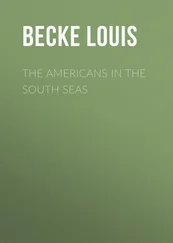Thomas Buick - An Old New Zealander; or, Te Rauparaha, the Napoleon of the South.
Здесь есть возможность читать онлайн «Thomas Buick - An Old New Zealander; or, Te Rauparaha, the Napoleon of the South.» — ознакомительный отрывок электронной книги совершенно бесплатно, а после прочтения отрывка купить полную версию. В некоторых случаях можно слушать аудио, скачать через торрент в формате fb2 и присутствует краткое содержание. Жанр: foreign_antique, foreign_prose, на английском языке. Описание произведения, (предисловие) а так же отзывы посетителей доступны на портале библиотеки ЛибКат.
- Название:An Old New Zealander; or, Te Rauparaha, the Napoleon of the South.
- Автор:
- Жанр:
- Год:неизвестен
- ISBN:нет данных
- Рейтинг книги:3 / 5. Голосов: 1
-
Избранное:Добавить в избранное
- Отзывы:
-
Ваша оценка:
- 60
- 1
- 2
- 3
- 4
- 5
An Old New Zealander; or, Te Rauparaha, the Napoleon of the South.: краткое содержание, описание и аннотация
Предлагаем к чтению аннотацию, описание, краткое содержание или предисловие (зависит от того, что написал сам автор книги «An Old New Zealander; or, Te Rauparaha, the Napoleon of the South.»). Если вы не нашли необходимую информацию о книге — напишите в комментариях, мы постараемся отыскать её.
An Old New Zealander; or, Te Rauparaha, the Napoleon of the South. — читать онлайн ознакомительный отрывок
Ниже представлен текст книги, разбитый по страницам. Система сохранения места последней прочитанной страницы, позволяет с удобством читать онлайн бесплатно книгу «An Old New Zealander; or, Te Rauparaha, the Napoleon of the South.», без необходимости каждый раз заново искать на чём Вы остановились. Поставьте закладку, и сможете в любой момент перейти на страницу, на которой закончили чтение.
Интервал:
Закладка:
But, whatever its duration may have been, two causes operated to bring this period of migration to a close. The first of these influences was the dispersion of the Mongolian race from Central Asia; the second, the subsidence of the land along the Asiatic coast. Either of these events would have been in itself sufficient to cut off the supply of emigrants to the islands. The descent of the more warlike Mongols from their high plateau would effectually close the inland route across the north of Asia to the gentle Caucasians; while the sinking of the land-bridge, along which they had been wont to pick their way, would so increase the hazard of the journey that none would care to risk a voyage across the greater stretch of sea. Thus the first stratum of the Polynesian race was laid by an invasion of European people embarking from Asia; and these light-skinned, fair-haired Vikings, who were driven out of their ancient home by the descent of the giant glaciers, plunged into the abyss of uncertainty, little dreaming that from their stock would arise a people whose life-story would be, as it still is to some extent, one of the world's unsolved problems.
Amongst the many features which have seemed to intensify the shroud of mystery enveloping these people is the combination of a dark skin with tall and stalwart frames and a head-form usually belonging to fair races. Also the strange stratification of their customs discloses a social condition so contradictory as to amount almost to a paradox. Why a dark-skinned race should possess features which find their counterpart in the whites of to-day, or why the most primitive method of obtaining fire – by friction – should be found side by side with highly scientific methods of warfare, especially displayed in the art of fortification, seemed difficult of explanation, until the idea of a second invasion, comprised of dark-blooded people, had been conceived and had taken root. 3 3 "It is most certain that the whites are the aborigines. Their colour is, generally speaking, like that of the people of Southern Europe, and I saw several who had red hair. There were some who were as white as our sailors, and we often saw on our ships a tall young man, 5 feet 11 inches in height, who, by his colour and features, might easily have passed for a European" ( Crozet's Description of the Maoris at the Bay of Islands ).
The theory of a grafting of a dark race on to the Caucasian stem which had already been planted in Polynesia explains much. It would account for the olive-coloured skin of the present-day natives, and it would provide the reasonable supposition that, being later comers, they would import with them newer ideas and more modern customs, some of which would be adopted in their entirety, others in a modified form. With the advantage of many centuries of contact with neighbouring peoples, they had necessarily learned much of the art of war, which had been quite unknown to the islanders in their isolation. These dark invaders were therefore able to come in the spirit of conquerors; and consequently the masculine arts, such as the making of weapons and the building of forts and canoes, received an impulse which placed them considerably in advance of anything of which the original people had ever dreamed. But the domestic arts would be but little changed, for the reason that the invasion, being one of warlike intent, would be comprised largely of males, the women who were taken to wife after their lords had been vanquished being allowed to retain their old modes of life. Hence the methods of twisting threads of fibre, of weaving mats, and of making fire, would remain the same as had been practised by them from time immemorial, while there would be a distinct advance in those arts which came more exclusively within the domain of the males. In two respects, however, these newcomers did not better the condition or raise the standard of art amongst the people with whom they were about to mingle their blood. They introduced neither pottery nor the use of metals. It is therefore clear that the section of the human family to which they belonged had not advanced beyond the Stone Age when their invasion took place; and this fact helps us to some extent in our inferences as to the period when this second migration commenced and when it terminated.
For the direction whence these dark-skinned invaders came we have to rely on a careful comparison of the traditions and genealogies of the present-day people, who have preserved in a remarkable way certain leading facts, which serve as landmarks by which their journeys can still be traced. By the aid of these, the thread of their history has been followed back to a time at least several centuries before the birth of Christ, when a dark-skinned people dwelt upon the banks of the river Ganges. Here, by contact with other races, probably the Egyptian and Semitic, they acquired that smattering of mythology which, as preserved by the ancient Maori, resembled so closely the beliefs still prevalent in many parts of the Old World. But although versed in the mysterious philosophy, if such it can be styled, of their time, they were entirely ignorant of the principles of the Buddhist religion; and from this circumstance it is fair to deduce that they had left India before Gautama, who died in 477 b. c., had commenced his teaching of "Nirvana and the Law."
But when we come to inquire into the causes which operated to inspire this migration, we get little information beyond the explanation commonly given as the root of all Polynesian movements, that "great wars prevailed." If this be the true reason why a whole nation should move en masse , then it is not unreasonable to suppose that the future Polynesians were the defeated people, and were forced by irresistible waves of invasion to abandon their home in India. Slowly they were pushed southward and eastward by the more warlike tribes who came down from the north; and as they made their way along the coasts of the Malayan Peninsula, circumstances, climate, and assimilation with other peoples continued the process of racial modification which had commenced before they abandoned the valley of the Ganges. For three hundred years or more they drifted from point to point. We know little more, for there occurs a comparative blank in the story of their journeyings as they moved along the coast of Sumatra and down the Straits of Malacca.
In the year 65 b. c., however, we again get a glimpse of them on the island of Java. From this point, although their movements are often vague and shadowy, they are never entirely lost to sight. Tradition, at this period, speaks of a renowned personage named Te Kura-a-moo, who "went to the east, to the rising sun, and remained there." To precisely what spot in the east he journeyed is uncertain, but his objective is generally supposed to have been the island of Java, which was then known as Avaiki-te-Varinga. This is the first suggestion of migration which we have in Polynesian tradition; and as it corresponds in date with other large ethnic movements which are known to have occurred in the Malayan archipelago, it is more than probable that pressure from other invaders compelled the occupation of Java, which thus became the parent Hawaiki, towards which the Maori stands in much the same relationship as does his brother pakeha to the Garden of Eden.
But the same cause which drove these wandering Asiatics into Java, at a latter period led to its evacuation. And still the movement was in an eastward direction, towards the islands of Indonesia, the people as they moved becoming more and more expert in the art of navigation and sea-craft. In view of the scattered nature of the archipelago in which they now found themselves, their voyages became gradually longer, requiring larger canoes and more daring seamanship. They were beginning to leave the beaten path which hitherto had been the common course of the human race – the mountain, the river, and the plain. With them the sea was gradually becoming the broad highway which had to be traversed in order to find fresh resting-places, or to maintain communication with established outposts in more advanced situations. The spirit of the sea-gipsy, which led them to do and dare, was rapidly developing within them, and the knowledge thus born of courage and experience was shortly to prove invaluable to them in carrying to a successful issue their own great policy of conquest.
Читать дальшеИнтервал:
Закладка:
Похожие книги на «An Old New Zealander; or, Te Rauparaha, the Napoleon of the South.»
Представляем Вашему вниманию похожие книги на «An Old New Zealander; or, Te Rauparaha, the Napoleon of the South.» списком для выбора. Мы отобрали схожую по названию и смыслу литературу в надежде предоставить читателям больше вариантов отыскать новые, интересные, ещё непрочитанные произведения.
Обсуждение, отзывы о книге «An Old New Zealander; or, Te Rauparaha, the Napoleon of the South.» и просто собственные мнения читателей. Оставьте ваши комментарии, напишите, что Вы думаете о произведении, его смысле или главных героях. Укажите что конкретно понравилось, а что нет, и почему Вы так считаете.











